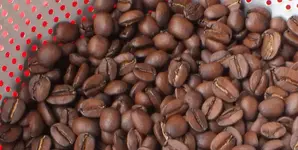addertooth
Member
- May 30, 2022
- 63
- 10
First post in this forum; I am located in extreme Southern Arizona.
I picked up a used Gene Cafe CBR101 about a week ago, and grabbed some green coffee beans.
The green beans are:
Colombian Nariño Supremo (two batches one Full-City, and the other Full-City+)
Colombian Royal Select Swiss Water Process Decaf (one batch roasted to Vienna)
Mexican Huatusco Alturo (one batch roasted to Full-City+)
I used the well known "double roast" method on all three types of beans. The non-decaf Columbian has two different roasts with it.
The steps were: pre-heat to 230f, then 230f dehydrate for 8.5 minutes, removed beans and forced cooled.
While cooling the beans, raised the roaster temperature to 392f. Once the temperature was stabilized and the beans room temperature, the beans were put back in to begin the roasting phase.
The kitchen timer was zeroed at this time and started. 00:00
The Colombian non-decaf were Roasted at 392f for 5 minutes, then raised the temperature to 464f for 6.5 more minutes, then dropped down to 410f until final color. (first and second batch, these were my "cutting my teeth" runs)
Decaf Colombian beans were Roasted at 392f for 5 minute, then stepped up to 450f for 6.5 more minutes, dropped down to 440f until final color (Vienna).
For the non-decaf Colombian beans the 410f temperature step happened at 11 minutes 30 seconds. For the Mexican beans the temperature 410f step occurred at 11 minutes 00 seconds, as that batch was already starting to brown faster than the Colombian beans.
The full City roast first batch of the non-decaf Colombian beans completed at 15 minutes. About 4.5 minutes after first crack. No oil was seen on the surface, chocolate brown. The tips of the beans showed cracks.
For the Full City+ roast second batch of the non-decaf Colombian beans, completion was at the 16 minute mark. About 5.5 minutes after first crack. No oil was seen on the surface, dark chocolate brown. The tips of the beans showed cracks.
For the Decaf Colombian, which were roasted to Viena, completion was at the 17 minute mark, with smoking happening in the final minute. It had some beans with oil on the surface.
For the Mexican beans, which were roasted to Full City+, they completed earlier than expected at 15 minutes. They finished darker and with a smoother bean texture than the than the Full City+ Columbian. No oil was seen on the surface of the beans. The tips of the beans showed cracks. A few beans showed cracks in the middle. Smoke was seen during the roast.
First crack for the Colombian beans all fell in the 10 minutes 15-30 second range.
First crack on the Mexican beans arrived earlier at 9 minutes 45 seconds. The beginning of the Second crack was heard about 15 seconds before the roast was ended (I can only move so fast).
Roaster's notation. The Colombian beans which were roasted to Full-City/Full-City+ never produced smoke at 392f. The Mexican beans did.
For the Colombian beans which were roasted Full-City and Full-City+ no smoke was ever seen. For the Decaf Columbian beans, smoke was seen at the end of the Vienna-level roast.
***********************************************************************************************************
Taster notes after letting the beans rest 48 hours before milling and preparing a cup (yes, a bit soon but I was curious):
First batch Colombian showed lots of character of the beans with strong sweet, chocolate, with a balanced roast flavor. This batch had the lowest level of roast flavor, but it was quite pleasant.
Second batch Colombian showed slightly less character than the first batch but with caramel, chocolate and buttery flavor present. The roast flavor was more pronounced, but not excessive.
Decaf Colombian had big bold roast flavor, with noticeable chocolate notes.
The Mexican coffee was roasted today, so it will be a couple days before it is sampled.
**********************************************************************************************************
So now the actual questions:
I only have four roasts under my belt. Is it expected that some types of beans will roast much quicker? The Mexican beans finished darker and a full minute sooner than the Colombian beans (of equivalent size).
Is it normal for some beans to produce smoke at only a few minutes into the roast at 392f? The Mexican beans were the only ones which showed this characteristic. The Colombian and decaf Colombian did not do this.
I picked up a used Gene Cafe CBR101 about a week ago, and grabbed some green coffee beans.
The green beans are:
Colombian Nariño Supremo (two batches one Full-City, and the other Full-City+)
Colombian Royal Select Swiss Water Process Decaf (one batch roasted to Vienna)
Mexican Huatusco Alturo (one batch roasted to Full-City+)
I used the well known "double roast" method on all three types of beans. The non-decaf Columbian has two different roasts with it.
The steps were: pre-heat to 230f, then 230f dehydrate for 8.5 minutes, removed beans and forced cooled.
While cooling the beans, raised the roaster temperature to 392f. Once the temperature was stabilized and the beans room temperature, the beans were put back in to begin the roasting phase.
The kitchen timer was zeroed at this time and started. 00:00
The Colombian non-decaf were Roasted at 392f for 5 minutes, then raised the temperature to 464f for 6.5 more minutes, then dropped down to 410f until final color. (first and second batch, these were my "cutting my teeth" runs)
Decaf Colombian beans were Roasted at 392f for 5 minute, then stepped up to 450f for 6.5 more minutes, dropped down to 440f until final color (Vienna).
For the non-decaf Colombian beans the 410f temperature step happened at 11 minutes 30 seconds. For the Mexican beans the temperature 410f step occurred at 11 minutes 00 seconds, as that batch was already starting to brown faster than the Colombian beans.
The full City roast first batch of the non-decaf Colombian beans completed at 15 minutes. About 4.5 minutes after first crack. No oil was seen on the surface, chocolate brown. The tips of the beans showed cracks.
For the Full City+ roast second batch of the non-decaf Colombian beans, completion was at the 16 minute mark. About 5.5 minutes after first crack. No oil was seen on the surface, dark chocolate brown. The tips of the beans showed cracks.
For the Decaf Colombian, which were roasted to Viena, completion was at the 17 minute mark, with smoking happening in the final minute. It had some beans with oil on the surface.
For the Mexican beans, which were roasted to Full City+, they completed earlier than expected at 15 minutes. They finished darker and with a smoother bean texture than the than the Full City+ Columbian. No oil was seen on the surface of the beans. The tips of the beans showed cracks. A few beans showed cracks in the middle. Smoke was seen during the roast.
First crack for the Colombian beans all fell in the 10 minutes 15-30 second range.
First crack on the Mexican beans arrived earlier at 9 minutes 45 seconds. The beginning of the Second crack was heard about 15 seconds before the roast was ended (I can only move so fast).
Roaster's notation. The Colombian beans which were roasted to Full-City/Full-City+ never produced smoke at 392f. The Mexican beans did.
For the Colombian beans which were roasted Full-City and Full-City+ no smoke was ever seen. For the Decaf Columbian beans, smoke was seen at the end of the Vienna-level roast.
***********************************************************************************************************
Taster notes after letting the beans rest 48 hours before milling and preparing a cup (yes, a bit soon but I was curious):
First batch Colombian showed lots of character of the beans with strong sweet, chocolate, with a balanced roast flavor. This batch had the lowest level of roast flavor, but it was quite pleasant.
Second batch Colombian showed slightly less character than the first batch but with caramel, chocolate and buttery flavor present. The roast flavor was more pronounced, but not excessive.
Decaf Colombian had big bold roast flavor, with noticeable chocolate notes.
The Mexican coffee was roasted today, so it will be a couple days before it is sampled.
**********************************************************************************************************
So now the actual questions:
I only have four roasts under my belt. Is it expected that some types of beans will roast much quicker? The Mexican beans finished darker and a full minute sooner than the Colombian beans (of equivalent size).
Is it normal for some beans to produce smoke at only a few minutes into the roast at 392f? The Mexican beans were the only ones which showed this characteristic. The Colombian and decaf Colombian did not do this.
Last edited:

